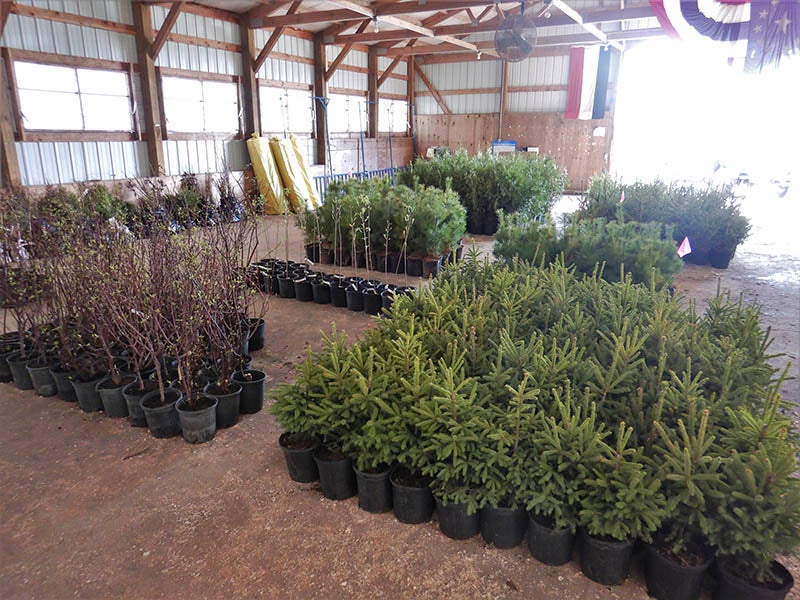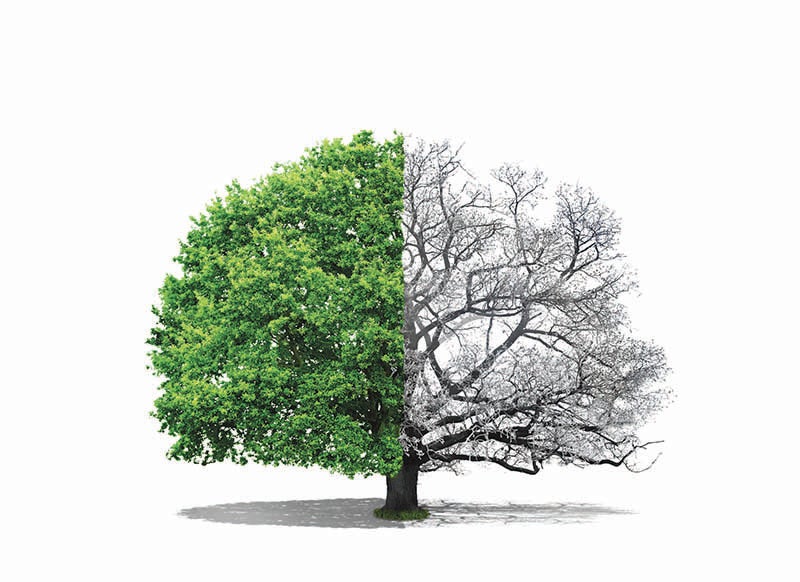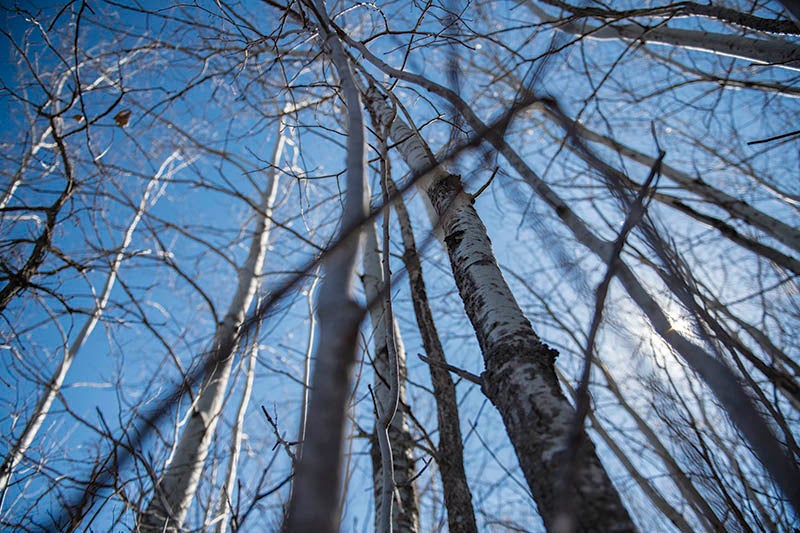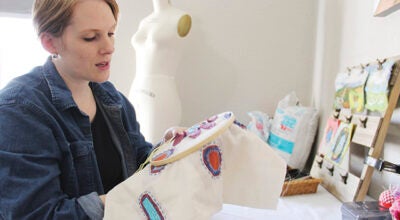Want to plant trees? Consider these tips to get started
Published 10:00 pm Wednesday, May 22, 2019
The Freeborn County Soil and Water Conservation District staff knows several county residents who are saps for trees.
Yearly, the Soil and Water Conservation District sells between 8,000 and 12,000 trees, said Soil and Water Conservation District technician Lindsey Zeitler. The majority of those trees are sold at its annual tree sale, which wrapped up at the end of April.
The sale starts in December, with the bulk of orders sent in from the order form provided to approximately 1,500 residents county-wide in the annual district newsletter.
Many of those who buy trees through the sale purchase between 25 and 100 trees, Zeitler said, while a few purchase between 300 and 400. Most of the customers are repeat buyers, she said.
“I don’t know where they’re planting all these trees they’re buying,” Zeitler said jokingly.
The trees, which customers can either buy as bare-root or potted trees, mainly come out of two nurseries, both in Minnesota. If customers special order a tree, the Soil and Water Conservation District could deal with as many as 20 nurseries, Zeitler said.
The trees sold by the district are sold for conservation purposes, she said. People who purchase them often use them for windbreaks or as habitat or food for wildlife — particularly, hazelnut and cranberry trees shrubs feed wildlife well, she said. Trees can also raise property values, Zeitler said.
The Soil and Water Conservation District chooses its offerings based on what has sold well in the past.
“I think it’s just a matter of providing the service to the community,” Zeitler said.

The Soil and Water Conservation District hosts an annual tree sale in April, selling most often to repeat customers in Freeborn County. Provided
The city’s take on trees
Meanwhile, city arborist Ben Bangert and city forester Matt Merrick use the spring to plant somewhere between 15 and 60 trees for the city of Albert Lea.
Most of the city’s trees — over 120 consistently — are planted in the fall, Bangert said, as they see better success and require less watering.
Ornamental trees, or flowering or fruiting trees that tend to stay under 25 feet tall, are reserved for beneath power lines, in parking lots or garden areas, Merrick said. Most of what the city plants are shade trees, Bangert said.
During the summer, Merrick said, they are doing “boulevard time,” tending to the strip between the sidewalk and street and removing damaged or diseased limbs and trees. They also use this time to check on residential compliance with tree requirements. All trees must maintain 15 feet of clearance above a street and 8 feet above a sidewalk, Merrick said. Homeowners are also responsible for dealing with their diseased and dying trees that have the potential to fall.
While planting trees, Bangert said they keep in mind the spread of species. For instance, some parks tend to have many bur oaks, Merrick said. They are trying to switch it up.
“We’re into variety,” Bangert said. “We get probably 10 different species of trees when we plant.”
“Diversity is a big one,” he said.
Still, the trees need to be suited for the climate. Trees grown in areas with more temperate climates — even if it is the same species as a kind that grows in Minnesota — may not succeed. The city gets all of its trees from places north of Albert Lea, Bartlett said.
When the city plants trees, Merrick said, homeowners do get to voice their opinions on where those trees may go. They will plant trees in open areas, newly vacated lots and around the outside edges of parks and big fields, Merrick and Bangert said. But when they remove trees, Merrick said they also ask homeowners if that homeowner would like to have that tree replaced. They keep a list of those homes, and of park removals for future trees.
Furthermore, if homeowners are interested in a tree, city staff can determine if there is a boulevard and whether there is room for a tree.
“A lot of people we talk to, they already know the benefits,” Bangert said. “They say, ‘Oh yeah, I love trees — it’s just I didn’t know I could have one in my yard.’”

Finding a home for your tree
Landscaping with trees means paying attention to what your tree will become as it grows. Make sure you choose trees that grow well in the soil you have. The Freeborn County Soil and Water Conservation District can help you identify what trees are good for your yard. According to the Arbor Day Foundation, consider:
• Is anything above the tree? Will it grow tall enough to conflict with that?
• How wide will the tree’s canopy spread be?
• Will the tree lose its leaves in the winter (deciduous)?
• What will the tree’s shape be? Round trees provide more shade, but columnar trees take less space.
• What is your tree’s growth rate? How long will it take for your tree to hit its max height? Consider that species that grow slower tend to live longer than their faster-growing counterparts.
• Keep soil, sun and moisture requirements in mind.
• If you choose a fruiting tree, will the fruit fall somewhere where it is unwelcome, like a sidewalk? Are you up for cleaning up after your tree when it drops its fruit?
• Is your tree fit for the temperatures in your area? According to city of Albert Lea arborist Ben Bangert, look for trees in hardiness zones 4 or 5.
Let it grow: 7 tips for caring for your tree
1
Find the right tree
Determine what you want your tree to do. Do you want it to look nice, provide shade, serve as a windbreak, increase privacy? The purpose you want your tree to serve will impact what tree you choose, the Arbor Day Foundation said. Also consider your planting limitations: how tall and wide it will become, whether your soil conditions are right and how much sun the tree will get where you plant it.
2
Choose a healthy one
Inspect the roots of your tree. According to the Arbor Day Foundation, if you are planting a bare-root tree, look for abundant root growth that is fibrous, moist and a good color. Balled and burlapped trees should come securely tied and with a firm soil ball. Always carry these trees by the base, not the trunk or branches. If your tree was container-grown, make sure the tree is not root-bound. If you see any roots that circle around the edge of the container, cut them before planting to avoid stunting the tree’s growth.
3
Plant
Bare root trees
Remove the packing material from the tree’s roots. Soak the tree in water for three to six hours. Keep the roots moist at all times and covered with burlap or mulch until planting time. Dig a hole wider than necessary so the roots have room to spread. Clear grass in a 3-foot radius around the planting site, and rototill the soil. Position the tree in the center, and, when replacing the soil, ensure the root collar — the bulge above the roots — is at ground level. Fill the hole to just below the root collar, and push down on the soil to eliminate air pockets. Create a watering basin around the tree and give the tree a good watering. Mulch it with woodchips or shredded bark about 2 to 4 inches deep, leaving 4 inches of space between the tree trunk and the nearest mulch.
Balled and burlapped trees
Dig a saucer-shaped hole and rototill an area five times the diameter needed for the tree and as deep as the root ball, if possible. Make sure the sides of the hole slope, but do not disturb the soil at the bottom of the hole. Set the tree in the center of the hole, making sure the root collar is at ground level. Once the tree is in the hole, cut vertically up the sides of the wire basket and peel it away. Remove all twine, rope and nails that may hold the burlap together. Pull the burlap away. If the burlap below the tree is untreated and not vinyl, it can stay there. After you are sure the tree is standing straight, firmly pack soil around the root ball, making sure not to leave any air pockets. Create a water basin around the tree, give it a good watering and mulch it.
Containerized trees
Remove the tree from the container by carefully sliding it out after tapping the sides and bottom of the container. Do not tug on the trunk, as this could separate the roots. If the tree is rootbound, cut an X on the bottom of the root ball, then four vertical lines on the rootball sides.
Set the tree in the middle of your hole, then support the tree in a straight position. Firmly pack soil around the roots until the soil is just below the root collar. Create a water-holding basin and water the tree. Mulch it with woodchips or shredded bark. Remove any labels, prune broken, dead or rubbing branches or branches that compete with the leader, and water your tree once a week with a slow, one-hour-long trickle.
4
Mulch
Mulch insulates the soil, retains water, prevents weeds, reduces lawn mower damage and prevents soil compaction, according to the Arbor Day Foundation. To properly mulch your tree, remove grass within a 3- to 10-foot area (depending on your tree’s size) and pour woodchips or bark pieces between 2 and 4 inches deep in that area. Prevent mulch from directly touching your tree’s trunk, the Arbor Day Foundation suggests.
5
Water your tree
Water trees immediately after you plant them. During the first two years, those trees will need wood-chip mulch and additional water to help it as it deals with heat and drought during its first summers. The Arbor Day Foundation said deep watering — keeping the soil moist all the way down to the bottom-most roots — can expedite root establishment.
6
Prune your tree
How you prune should depend on how old your tree is. When you plant a tree, try to leave as much of the tree intact as possible. A larger leaf surface will help create food, which in turn can help the tree establish a larger root system. At this time, you should prune broken branches or those swollen from insect eggs or stings. Remove tree tags. For 3- to 4-year-old trees, cut off thin, excessive branches to reduce light, water or nutrient competition among branches. Remove some of the lowest limbs and any branches that rub together or grow in a way you don’t want. For 5- to 7-year-old trees, prune off lower limbs. Branches do not move upward as a tree grows taller, so trim branches out of the way of humans walking under. Cut back on higher branches that may disrupt your tree’s silhouette. After 15 years, the only pruning necessary should be to dead or damaged limbs.
It is most common to prune trees in the winter, when they are dormant. The Arbor Day Foundation suggests waiting until after the coldest part of winter. Prune in the summer to slow the growth of branches you do not want or to remove defective limbs. For spring flowering trees, prune after the flowers have faded. Those that flower mid- to late summer should be pruned in winter or early spring, the Arbor Day Foundation said. Do not prune in the fall.
If the pruning job is a big one on a big tree, call a professional arborist.
7
Identify pest and disease problems
The University of Minnesota Extension has a master gardener program. These master gardeners can help answer your questions about pests and diseases.

The do’s and don’ts of trees
DO
• Pay attention to your hardiness zones. Even if the variety can survive in Minnesota, a specific tree grown outside of your hardiness zone may not survive, said Matt Merrick, forester for the city of Albert Lea. When you purchase a tree, check that the tree was grown in zone four or five.
• Consider your roots. Make sure the hole you dig for your tree is bigger than the pot itself, said Freeborn County Soil and Water Conservation District technician Lindsey Zeitler. This way, the tree has room to grow. Additionally, be sure to trim any girdling roots, which circles or partially circles the base of a tree and can restrict the flow of water and nutrients to the tree. City arborist Ben Bangert said the effect of girdling roots to a tree is like wearing a tie as a child and then never loosening it as you grow into adulthood.
• Water adequately. In the first year of a tree’s growth, water is critical, Bangert said. If the city plants a tree in the spring, Merrick said it gets 5 gallons of water a day every day for two weeks.
• Mulch your tree. Add wood mulch to keep weeds down and soil cool and to add nutrients to the soil as it deteriorates, Bangert said. This can also prevent damage caused by getting too close with a strimmer or a lawn mower, Merrick said.
• Check your soil type. Certain trees grow best in certain conditions. The Freeborn County Soil and Water Conservation District can help you learn what soils you have in the areas you are hoping to plant as well as what trees best fit there.
“We want to provide them with trees that is going to grow where they want to plant them,” Zeitler said.
• Support its growth. Use posts and straps — at least two — to stabilize your fledgling tree, then remove them after two or three years, Bangert said.
DON’T
• Be afraid to pay. A quality tree from a nursery can cost as much as $100 or $200, Bangert and Merrick said.
• Trim your new tree aggressively. It should be minimal for a new tree, Merrick said. Limit early trimming to broken or diseased branches.







